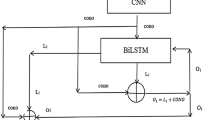Abstract
As the main carrier of Chinese civilization, the importance of ancient Chinese documents cannot be overstated. However, the phenomenon of “Heavy storage and light use” is serious in modern society. In order to improve the utilization of its content, and to improve the difficult recognition problem caused by the complex character glyphs and diverse styles of Chinese characters in ancient books, as well as the single and double column mismatch and the different sizes of Chinese characters, in this paper, we propose an adaptive receptive field-based image recognition network for Chinese ancient characters. The network fully considers the high sensitivity of residual dense network to data fluctuation and uses selective convolution kernel to construct residual dense blocks to provide a dynamic selection mechanism for the receptive fields of different images, so that it can focus on the fine structure of Chinese characters and thus realize cross-channel information interaction and integration. The experimental results show that the accuracy and precision of recognition using this paper's network can reach 93.48% and 95.37%, which is a significant improvement compared with other recognition methods, and proves that SKRDN has good advantages in dealing with the recognition problem of ancient Chinese characters.







Similar content being viewed by others
Data availability
The authors have not disclosed any competing interests.
References
Baidu. Baidu cloud ocr api [Online]. Available: https://cloud.baidu.com/product/ocr/general
General Office of the State Council on further strengthening the protection of ancient books (2007) Bulletin of the State Council of the People's Republic of China 06(08):12–14
GooGle. Google drive ocr api [Online]. Available: https://www.google.com/drive/
Guo LM, Ge L, Liu YR (2019) The practice of convolutional neural network in ancient Chinese character recognition. Library Forum 039(010):142–148
Han YF (2017) The current situation and analysis of the digitization of Chinese classical literature. J Jinhua Vocation Tech College 1:61–67
He K, Zhang X, Ren S, et al (2016) Deep residual learning for image recognition. In: Proceedings of the 2016 IEEE conference on computer vision and pattern recognition. IEEE, Piscataway, pp 1–12
Huang S, Chen Q (2020) Computed tomography image classification algorithm based on improved deep residual network. Acta Optica Sinica 40(03):50–58
Huang S, Li F, Chen Q (2020) Computational tomography image classification algorithm based on improved deep residual network. J Opt 40(3):50–58
Huang G, Liu Z, Laurens V, et al (2017) Densely connected convolutional networks. In: Proceedings of the IEEE conference on computer vision and pattern recognition, Hawaii, USA, pp 4700–4708
Li X, Wang W, Hu X, et al (2019) Selective kernel networks. In: Proceedings of the IEEE/CVF conference on computer vision and pattern recognition, Long Beach, USA, pp 510–519
Lim B, Son S, Kim H, et al (2017) Enhanced deep residual networks for single image super-resolution. In: Proceedings of the IEEE conference on computer vision and pattern recognition workshops, Hawaii, USA, pp 136–144
Liu CL, Yin F, Wang QF, et al (2011) ICDAR 2011 Chinese Handwriting Recognition Competition. In: 2011 International conference on document analysis and recognition. IEEE, Hoboken, New Jersey, pp 1464–1469
Miao YL, Jia HH, Tang KX, Ji YC (2019a) Chinese Font translation with improved Wasserstein generative adversarial network. SPIE, Amsterdam, pp 318–323
Miao YL, Ji YC, Peng EL (2019b) Application of CNN-BiGRU model in Chinese short text sentiment analysis. Association for Computing Machinery, New York, pp 510–514
Zhang Z, Tang Z, Wang Y et al (2021) Dense Residual network: enhancing global dense feature flow for character recognition. Neural Netw 139:77–85
Zhao PA (2009) Research on the official changes. Shanghai Ancient Books Publishing House, Hebei University, pp 196–198
Zheng JL (2020) Essentials of digital processing and publishing of ancient books in public libraries. Comput Eng Appl Technol 12:49–51
Funding
This study was supported by the Research on Calligraphy Culture Inheritance Technology of Ancient Inscription Based on Artificial Intelligence [Grant Number 62076200], National Natural Science Foundation of China, Application Research of Font Generation Technology Based on Artificial Intelligence [Grant Number 2020JM-468], and Shaanxi Natural Science Foundation.
Author information
Authors and Affiliations
Corresponding author
Ethics declarations
Competing interests
The authors have not disclosed any competing interests.
Additional information
Publisher's Note
Springer Nature remains neutral with regard to jurisdictional claims in published maps and institutional affiliations.
Rights and permissions
About this article
Cite this article
Miao, Y., Liang, L., Ji, Y. et al. Research on Chinese ancient characters image recognition method based on adaptive receptive field. Soft Comput 26, 8273–8282 (2022). https://doi.org/10.1007/s00500-022-07270-x
Accepted:
Published:
Issue Date:
DOI: https://doi.org/10.1007/s00500-022-07270-x




